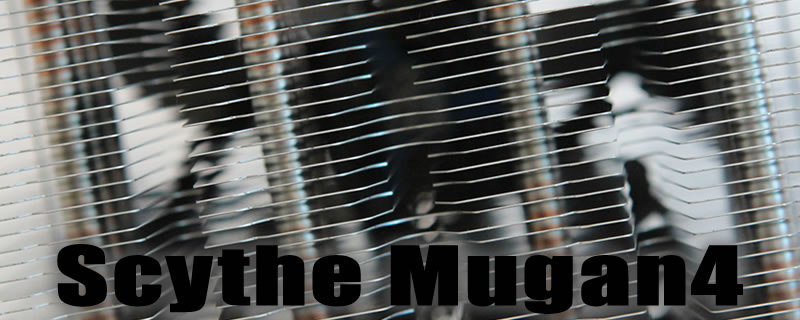Scythe Mugan4 Review
Â
Performance and Testing
The test set up consisted of the following
Intel i7 3960X [email protected] 1.1v (undervolted) 4.0GHz @ 1.25v 4.4GHz @ 1.35v 4.6GHz @ 1.45v Gigabyte X79 UD3 Corsair Vengeance LP Memory Corsair HX850 V2 Corsair Force GT 60GB Coolermaster Storm Trooper.Â
As usual we’ll be testing our coolers at varying levels of overclock and increasing levels of voltage. this in turn of course means increasing levels of heat which the coolers need to dissipate. To begin with we start with the undervolted stock speed. Why undervolted? well if you have things set on “Auto”, you may well be using more volts than are actually required to run at the chosen frequency, for example our 3960s will run quite happily at just 1.1volts, solid as a rock, 24/7, and as such we use this as our starting point.
Continuity is very important in testing, and for this reason we keep as many of the potential variables as locked down as possible. We will be using OCCT in Linpack X64, AVX compatible with all logical cores tested and 90% free memory utilised. The test is set up to run automatically with just a few clicks to set it going. A 10 minute idle followed by 30 minutes of testing and a 5 minute cool down is the order of the day and brings the total test time per clock speed to 45 minutes. So as to remove subjectivity in determining whether a CPU has failed, OCCT is set to stop the test and register a fail should the max temp exceed 80 degrees. In testing we noted that if even just one of the cores exceeds 82 degrees OCCT halts the test and a fail is recorded.
The Mugan4 doesn’t come with any low noise adapters or additional fans so for once the testing was a relatively simple and quick process, simply strap on the fan and test at the varying overclocks
It’s fair to say we were quite shocked by the Mugan4s performance, even at this undervolted level it’s cooling the chip better than pretty much all the tower air coolers, including the recently tested NH-U12S and the bigger NH-U14S. Heck, it’s only a few degrees off the mighty NH-D14. OK, so the 12S and 14S are slimmer units with less surface area on the fin stack, but just look how the Mugan4 compares to the mahoosive Alpenfohn K2, which don’t forget is a twin fan cooler. That’s not the end of it though as the Mugan4 also beats a good few of the AIOs, including the Eisberg 120 and 240 models. It even betters the X40 and H100 albeit with them on their lowest fan settings. Performance at this undervolted level though is no guarantee that the Mugan$ will hold its own as the volts increase.
Â
Turning now to the 4GHz test we up the voltage to 1.25 volts, this is what is deemed normally as stock volts. Something we are always harping on about on the forums is AUTO does not mean stock volts, and normally if you overclocking with “auto” volts the motherboard will be upping the volts much more than needed if you were to do it manually. By whichever means it happens, upping the volts (especially from our 1.1v undervolt) does have a big impact on temps, with an average increase of 10-15 degrees seen in the results.
At the higher levels of heat generated by the increase in voltage required for the 4.0GHz overclock, fan performance, although still a factor becomes less critical, replaced instead by a coolers ability to conduct the heat up the heat pipes and more crucially the total surface area of the fins enabling convection to the atmosphere. This can be seen in the Mugan4s temps as it again betters the NH-U12S in both single and dual fan mode, and the bigger 140mm fan based NU-U14S with both single and dual fans. The Mugan4 is also pulling out a lead on the Prolimatech Genesis and Megahalem black, as well as the matterhorn Pure, and although the 240mm rad of the Eisberg 240L may be engendering slightly lower temps the mighty Mugan 4 is still beasting the 120L model and both high and low fan speeds, and coming within a tenth of a degree of the Corsair H60
Â
Upping the volts still further we achieve a stable 4.4GHz overclock at 1.35 Volts. It’s here we start to separate the wheat from the chaff, with lesser coolers not able to disperse the increased heat effectively. Again we see a jump of 10 degrees or so from the figures at 4GHz. Both the H100 and the well-respected D14 are creeping into the 70s here, indicating that only the cream of the crop will excel at this level.Â
This is where we start to separate the men from the boys. So how did the Mugan4 do? Well pretty damn well actually. It’s still beating the dual fan configuration of the NH-U14S by a few degrees, and bettering the Alpenfohn K2 by a good 3 degrees, being only 3-4 degrees off the pace of the D14, which remember is nearly twice the price. Conspicuous by their absence are the other air coolers we’ve looked at as they simply couldn’t make the grade at this level. As you might expect though the majority of the AIOs and water cooling systems have pulled ahead by a fair margin, with only their low speed temps coming close to those of the Mugan4Â
Â
Having gotten this far we were really quite hopeful that the Mugan4 might make it into the hallowed 4.6GHz club, but sadly it was not to be with the temps popping over 80 degrees some 15 minutes into the test and triggering an automatic fail.



